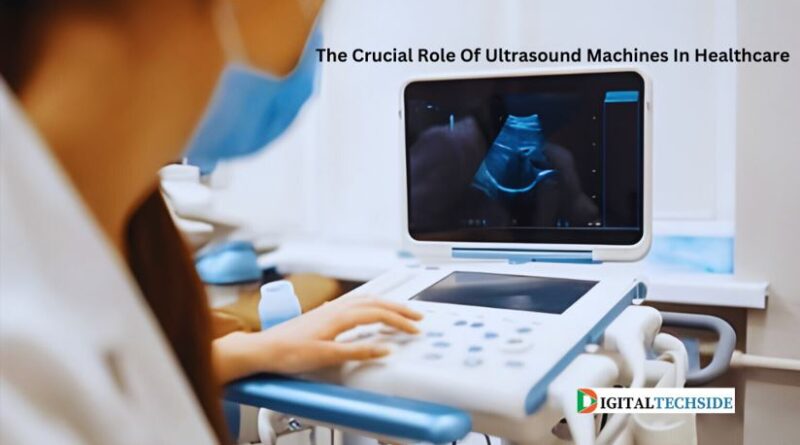The Crucial Role Of Ultrasound Machines In Healthcare
Introduction
To understand the significance of ultrasound machines in healthcare, one must first become acquainted with the essence of ultrasound technology. Originating from the Greek words ‘ultra’ and ‘sound’, ultrasound is nothing but essentially a form of imaging technology that utilises high-frequency sound waves to produce images of internal body structures. Its invention in the 20th-century brought about a revolution in the diagnosis process, making it quicker, safer, and non-invasive.
Over the years, advancements in technology have led to the evolution of ultrasound machines. They became smaller, portable, affordable, and more versatile in their capabilities. Moreover, their application broadened from simply visualizing the fetus in the womb to diagnosing a wide array of ailments, including cardiovascular diseases, gynecological disorders, and internal injuries, among others.
Indeed, the dawn of the 21st century has seen the use of ultrasound technology significantly increase and re-shape the face of modern healthcare. It’s ability to provide real-time imagery makes it invaluable in both hospital and emergency settings.
Ultrasound technology
Ultrasound technology is nothing, but it can seem complex to those unfamiliar with its mechanics. Yet, when simplified, it is simply a matter of sound waves and echoes. Ultrasound machines produce high-frequency sound waves that penetrate through body tissues. What cannot be penetrated is bounced back as an echo, which the machine interprets and converts into an image.
There are different categories of ultrasound machines in healthcare, each tailored to specific medical needs. Conventional or 2D ultrasounds provide a flat, two-dimensional black-and-white image. Doppler ultrasounds are used to capture images of the blood flow. Higher tech ultrasounds, such as 3D and 4D, offer three-dimensional images that provide even greater detail.
Ultrasound technology has found its use in a plethora of medical scenarios, ranging from diagnosing appendicitis to guiding biopsies. Additionally, they are a beacon of reassurance in obstetrics, giving expecting parents the first glimpse of their unborn child.
Moreover, the future of ultrasound technology is even brighter. Tele-ultrasound enables physicians to perform remote ultrasound examinations. Further, advancements in third- and fourth dimensional ultrasound are paving the way for clearer, more comprehensive imaging of the internal organs.
The power of ultrasound machines in healthcare for patient diagnosis lies in their ability to provide a non-invasive means of examining the body’s internal structures. It’s convenient, painless, and offers real-time image results. This paves the way for immediate action when necessary and thereby improves patient care.
For example
Take the case of Fred, a 60-year-old man who came to the emergency room with severe abdominal pain. A conventional X-ray or CT scan could have taken valuable time. But with an ultrasound, doctors were able to quickly diagnose him with an aortic aneurysm and immediately proceed with life-saving surgery. This is just one of many cases displaying the role and effects of ultrasound in patient diagnosis.
Turning our gaze towards Australia, it is evident that ultrasound technology has been warmly embraced by the healthcare system. It is actively used across a broad range of medical specialties, facilitating diagnosis and guiding procedures. However, the Australian healthcare system faces a few challenges in the efficient utilization of this advanced technology, which are mainly due to factors such as the high cost of machines, the need for skilled operators, and varying levels of access to ultrasound services depending on geographical location.
Nevertheless, Australia is striving to overcome these challenges by implementing strategic government policies, such as incentives for the provision of ultrasound machine. Moreover, there is a rising interest in researching affordable ultrasound solutions and training healthcare professionals in ultrasound usage.
From obstetrics to cardiology, from urology to radiology, ultrasound has become an indispensable tool. For instance, in obstetrics, it is routinely used to confirm pregnancy, establish gestational age, and monitor fetal development. In cardiology, it assists in diagnosing heart defects, assessing the heart’s functioning, and detecting blockages in the blood vessels.
Patients across a multitude of medical specialties have found the application of ultrasound to be a positive experience. “For a painful condition like kidney stones or gallstones, knowing what’s wrong right away is a relief,” quips Sandra, who was rapidly diagnosed thanks to an ultrasound.
The future of ultrasound in healthcare
The future of ultrasound in healthcare is ripe with potential as it intertwines with the realms of Artificial Intelligence (AI) & Machine Learning (ML). These technologies will significantly enhance image interpretation, making diagnosis more accurate. But the future of ultrasound will not just be about advances in technology, it will also be about efficient application. This will be facilitated by placing greater emphasis on the skills and training required for medical professionals to leverage ultrasound technology effectively.
Conclusion
In conclusion, ultrasound machines in healthcare clearly have a significant impact on patient diagnosis, treatment regimens, and results in the current healthcare environment. It is opening up new avenues for future research and development as well as better, quicker, and more precise patient care, in addition to solving current medical problems.

As a DIGITALTECHSIDE author, the majority of our articles have been focused on technology, blogging, business, lifestyle, social media, web design and development, e-commerce, money, health, education, entertainment, SEO, travel, and sports.
Contact us at digitaltechside@gmail.com if you have questions of anything.




